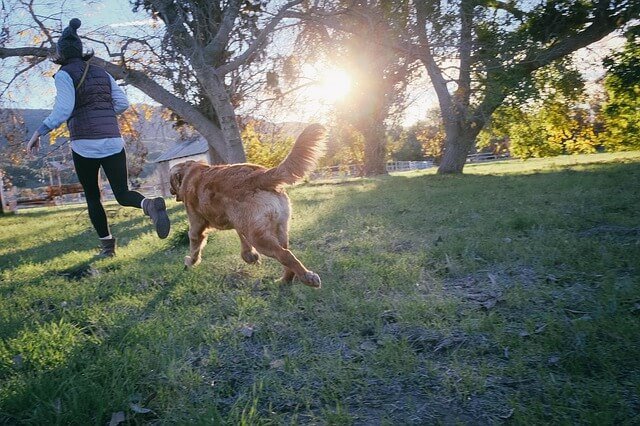Is my dog overweight? How to achieve ideal body condition
In This Article
One of the best ways to keep an eye on your dogs health is to make sure that they are at the right weight. Most people are not quite sure what this means though! It’s really not that tricky, and you can do it quickly at home without a scale.
Why is weight important?
Because lean dogs live longer!
Research shows that lean dogs lived up to 2.5 years longer than dogs carrying extra weight. Overweight dogs are also at greater risk of heart disease, arthritis and joint stress, skin issues, and diabetes. And with around half of the dogs in Australia being overweight or obese, it’s a VERY concerning statistic.
Fortunately, it’s easy to fix.
How to determine your dog’s healthy weight
We use a 1-5 scale called the Body Condition Score (BCS) to determine your dogs condition:
Very Thin
Underweight
Ideal Weight
Overweight
Obese
To determine your dog’s BCS, we need to do three checks of their body. Here’s how you do it.
Rib Check
Place your thumb on your dogs spine, and spread your fingers across their rib cage. It should feel like the knuckles on your hand when resting on a table, with a thin layer of fat and the ribs underneath. If it feels like your knuckles when your hand is closed in a fist, then your dog is on the underweight side of the scale. If it feels like the palm of your hand then you are over ideal weight.
Profile Check
Look at your dog from the side, ideally at the same level they are. You are checking the profile of their body. Their stomach should be tight and slightly tucked in.
Overhead Check
Look at your dog from above. You are checking their waistline. It should be obvious behind their ribs, but not overly narrow.
How Often To Check
Dogs are like people, and their needs often change over time. Variation in diet, age, seasons or stress at home can all have an impact on their health and body condition.
We recommend checking your dogs BCS every month. If you have a regular worming or nail trimming schedule, add a quick check of BCS to the routine and you’re good.
What to do with your body condition score
If you dog is not currently at ideal weight, then it’s a great idea to make some changes. The biggest factors which effect your dogs BCS are feeding amount, diet quality and exercise. There are other contributing factors like breed and health conditions, but these are vastly less common. The overwhelming majority of obesity cases can be managed with diet and exercise.
Here is an overview of how to achieve the perfect body condition for your dog.
1 - Very Thin
Ribs and spine protrude. Very narrow waist.
Putting on weight gently is the priority.
This is a potentially dangerous condition, talk with your vet.
2 - Underweight
Ribs and spine clearly visible. Narrow waist.
Make sure you are feeding a high quality, fresh food that meets NRC nutrient guidelines.
Increase feeding amount.
Eg. if you are currently feeding 1/4 pack, start feeding 1/3 each day.You can also increase the fat in diet. We suggest our Lamb and Buffalo & Fish recipes.
Check your dogs BCS weekly, you should be at ideal weight within a few weeks.
3 - Ideal Weight
Ribs and spine covered with thin layer of fat. Waist is obvious behind ribs, but is not overly narrow.
Well done. Perfect weight!
4 - Overweight
Ribs and spine are not visible and covered with fat. Waist is not obvious.
Make sure you are feeding a high quality, fresh food that meets NRC nutrient guidelines.
Decrease feeding amount.
Eg. if you are currently feeding 1/3 pack, start feeding 1/4 each day.Your dog will also very likely need more exercise.
You can also decrease the fat in diet. We suggest our Kangaroo & Chicken recipe.
Check your dogs BCS weekly, you should be at ideal weight within a few weeks.
5 - Obese
Ribs and spine covered with significant fat. Protruding waist.
Losing the weight gently is the priority.
This is a potentially dangerous condition, talk with your vet.
As always, if you have any questions feel free to get in touch 🐾








